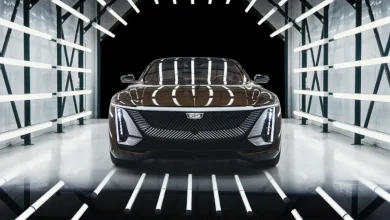Why Does Emirates Keep Upgrading Its Airbus A380s?

Modern aviation has diversified greatly and moved on from the hub-and-spoke model. Advances in small and mid-sized aircraft technology have made point-to-point services preferable for most passengers. As far as the Airbus A380 is concerned, the majority of runways and gates at the world’s airports are not large enough to accommodate this behemoth. As a result, most airlines are now moving away from this aircraft. Of the 15 total operating airlines, five have fully retired the jet from their fleets, while some still fly it as they await deliveries for other widebody planes. Others, such as British Airways, use it to solve a unique problem. In this case, the jet gives the huge capacity needed to overcome limited slots at the forever-congested London Heathrow Airport.
Emirates bucks the trend. It isn’t simply maintaining its existing A380 fleet, but growing and upgrading it. This has included boosts to the onboard experience with the carrier’s new premium economy product and the acquisition of an aircraft that it previously leased into its fleet on a permanent basis. This article explains why the carrier has chosen to make this commitment, and what that commitment looks like.
The Aircraft That Will Replace The A380 Hasn’t Arrived Yet
Credit: Wikimedia Commons
The Airbus A380 is no longer in production, so Emirates has had to look to other widebody aircraft types to replace its Ageing A380s. This is divided across the A350-900, 787 Dreamliner, and 777X. Boeing data reveals a vast Emirates 777X order (205 aircraft). Combined with Qatar Airways (124 aircraft), these two orders make up over half of the total firm orders for the 777X.
The table below shows the current state of the Emirates’ order sheet across three aircraft types:
Ordered Aircraft
Quantity Undelivered
Airbus A350-900
55
Boeing 787
30 (split between -8s and -10s)
Boeing 777X
205 (split between -8s and -10s)
The 777X will be the main aircraft replacing Emirates’ A380. Yet delays have caused major problems for the carrier. The updated contract for the aircraft’s arrival with Emirates set an October 2025 target. That will clearly not be met. Speaking with reporters, Emirates President Sir Tim Clark said, “We’re a frustrated entity because we need airplanes, and we need them now.” At the same time, Clark has said at the International Air Transport Association’s (IATA) Annual General Meeting (AGM) that he sees a “glimmer of light” for the 777X program that could lead to the first jets being received by Emirates by late 2026. This would be the case if the aircraft completes its Extended-range Twin-engine Operations Performance Standards (ETOPS) flight testing by the first quarter of 2026.
Emirates’ 777X Order
Credit: Wiikimedia Commons
Emirates’ first 777X order came at the 2013 Dubai Airshow, and confirmation came the following year. The initial deal was for 150 aircraft, including 115 777-9s and 35 777-8s. The total list price was $56 billion, although it is safe to assume that the carrier paid substantially less than this. Alongside the 150 aircraft-strong firm commitment, Emirates also had access to expand the order by a further 50 orders.
The next wave of Emirates’ 777X orders came during the 2023 Dubai Airshow. The UAE carrier announced it had made commitments for a further 55 777-9s and 35 777-8s. That brought the Emirates’ order up to the 205 aircraft that it is today.
His Highness Sheikh Ahmed bin Saeed Al Maktoum, Chairman and Chief Executive, Emirates Airlines and Group, said: “These additional aircraft will enable Emirates to connect even more cities, supporting the Dubai economic agenda D33 set out by HH Sheikh Mohammed bin Rashid Al Maktoum, to add 400 cities to Dubai’s foreign trade map over the next decade.”
What Is Included Onboard The Latest Emirates A380?
Credit: Wikimedia Commons
The first of the latest wave of Emirates A380s has arrived with upgraded interiors. “Step into a light and spacious cabin of cream tones and textured bronze waves, with the motif of the UAE national tree throughout,” writes Emirates. The upgrades show a clear focus on premium travelers. Examples include the First Class Shower Spa, which has been given a fresh trim and polished woodgrain finish. In the showers, customers can try the organic seaweed products made by VOYA exclusively for Emirates.
Customers can then enjoy drinks and light bites at the Onboard Lounge. The ambient lighting and woodgrain accents have received upgrades. The Onboard Lounge also includes a table to chat with your travel companions and other passengers, and a sofa to relax on.
Some of the developments have also aimed to bring the A380 premium experience in line with the Boeing 777 Game Changer aircraft. The cream leather seats now match the 777. These include zero-gravity mode, which aims to help your body find its natural position.
Enhanced Premium Economy
Credit: Emirates
Upgrades have also come to the Emirates’ A380s in the form of Premium Economy positioned at the front of the main deck. The jets have 56 seats arranged in a 2-4-2 configuration. Included are spacious seats, a side table, and in-seat charging ports. Customer service includes a curated menu and an extensive drinks menu, including Chandon Vintage Brut 2016.
The food, organized into monthly regional menus, is served on Royal Doulton china tableware with proper cutlery. An option sure to be popular is the cake and champagne celebration.
The current plan is to add this premium economy to A380 flights EK201/202, which offer direct service between Dubai and New York from December 1, 2025. It will also be on offer onboard its daily EK205/206 service to Milan from November 10, 2025. The expansion will truly escalate in spring 2026. The carrier hopes to provide the Premium Economy 68 global points by March 2026. This will be shared across the A380, A350, and Boeing 777. Within this, the A380 will be given the carrier’s most important routes to Asia and Australasia, such as to Sydney, Osaka, and Mumbai.
Emirates Is Showing Other Signs Of Commitment To The A380
Credit: Wikimedia Commons
Emirates’ commitment to the A380 isn’t just about upgrading its pre-existing aircraft. The carrier is also acquiring more examples of the super jumbo. In October 2025, it announced its most recent acquisition of an A380 from Stratos. It is purchasing this plane that it formerly leased outright. This jet, registered A6-EOO, first came into the Emirates fleet in September 2025. Aside from being withdrawn from service during the COVID-19 pandemic, this jet has been busily in service since then.
It is not desire that limits the number of A380s that are in the Emirates fleet, but the practicalities imposed by Airbus. Earlier in 2025, Tim Clark, the President of Emirates, told Business Insider that the carrier would purchase an A380neo if Airbus were prepared to build one. Such a jet could make the A380 more efficient with modern engine options, such as the Rolls-Royce UltraFan, and next-generation materials.
Regardless of such a desire, Emirates is unlikely to persuade Airbus to restart A380 production. The manufacturer sold just 251 units and lost billions in development costs. Emirates is unlikely to order enough aircraft to justify the incredibly high costs of redeveloping the aircraft. As a result, Emirates’ ongoing commitment to the A380 may see it attempting to procure second-hand A380s and upgrading the A380s it currently owns.
When Will Emirates Finally Retire Its A380s?
Credit: Wikimedia Commons
In late 2023, Emirates executives shared the carrier’s plans to continue flying the Airbus A380 into the 2040s. The airline’s CEO, Sheikh Ahmed bin Saeed Al Maktoum, then told Simple Flying’s managing editor, Tom Boon, that the carrier would continue purchasing second-hand A380s to ensure the carrier has the spare parts and airframes needed for this goal. The aircraft continues to retain suitability for Emirates that it lost for other carriers several years ago because of Emirates’ single megahub operations, its commitment to premium services, and the fact that it only flies widebody jets. For the reverse reasons, no US-based carrier purchased the A380 or has shown interest in the 777X.
However, just because the final A380 won’t be retired into the 2040s doesn’t mean that Emirates won’t retire its other superjumbos substantially earlier. Simple Flying’s Aaron Spray estimates that most retirements by other airlines will have occurred by 2035. Furthermore, there has already been some reduction in the services offered by Emirates A380s. In spring 2025, Simple Flying reported that of the 75 airports that have seen Emirates A380s, 24 no longer receive the aircraft. We shouldn’t read too much into this, as many of these destinations were one-offs or time-limited.
Regardless of what Emirates has planned, it is clear that avgeeks are eager to continue seeing the A380 in the skies for as long as possible. Responses to this question on our forum included: “comparing the A380 to any other airplane is like comparing a Mercedes S Class to a Toyota Yaris”, “they need to for as long as possible. It’s crucial to their current operations of hub and spoke”, and “[you] can’t best the experience in any other aircraft.”





